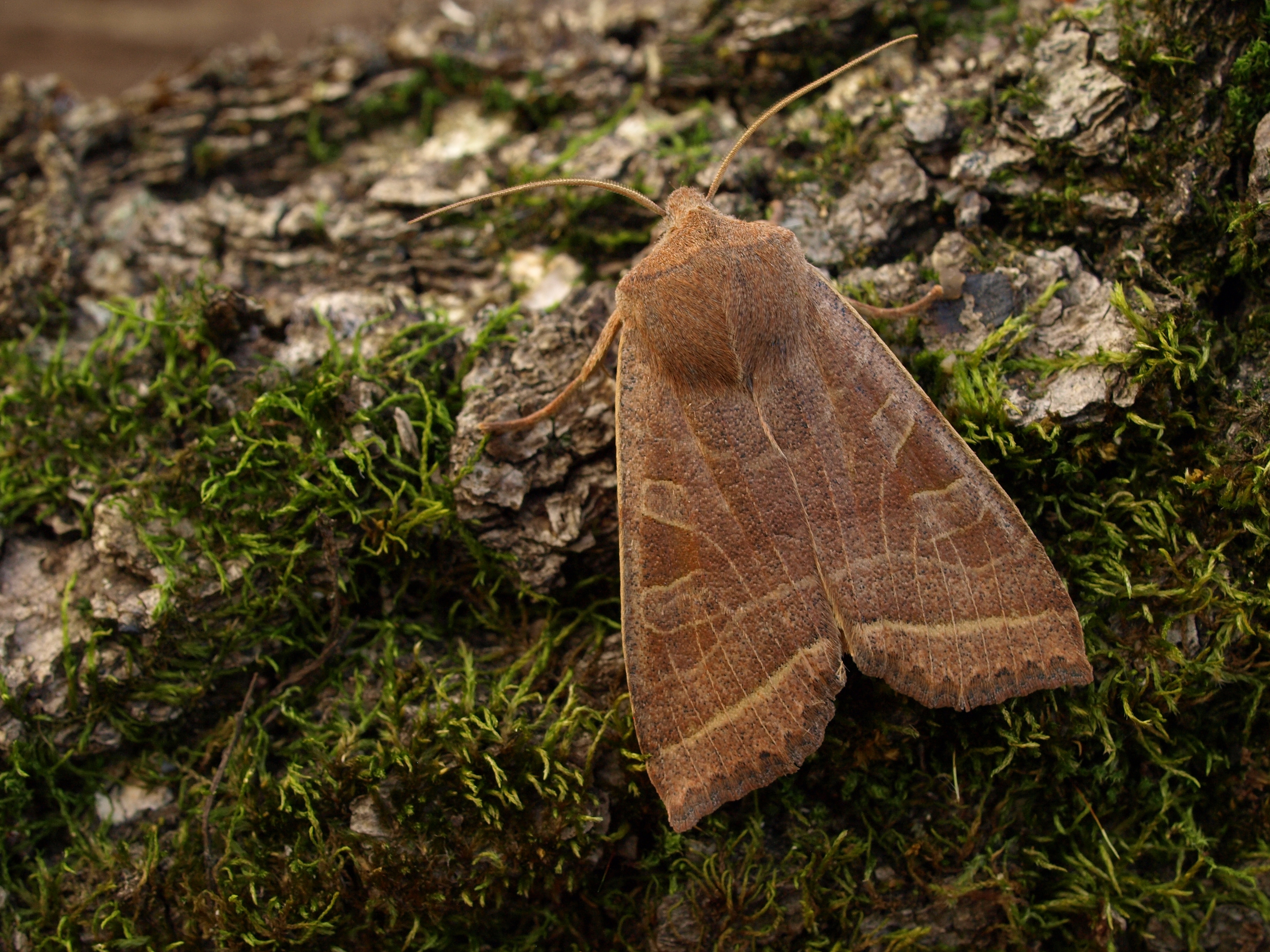 |
Tölgy Tavaszi-araszoló
|
Agriopis leucophaearia
|
Spring Usher
|
|
The first Tölgy Tavaszi-araszoló (Agriopis leucophaearia) of the year was seen on February 8th at Nagy Száraz Völgy near Tapolca but perhaps they were out before that - I noticed this only because it had settled by chance on a white painted waymarker in the forest (which had also been visited by a woodpecker!). Trunk searches since then have produced a steady stream of resting males (like many winter active geomterid moths, the females are flightless and have only vestigial wings) on oaks, hornbeams and limes usually about a metre above the ground (but that might be more to do with trunk-search ergonomics than the moth's real preference....). The British know this moth as the Spring Usher because of its late winter emergence time which seems to herald the change of the season. They stick around long enough to see the arrival of spring but by April they'll mostly be gone (having left eggs ready to hatch and feed on the oak leaves when they come).
 |
Zöldes Tavaszi-araszoló
|
Phigalia pilosaria
|
Pale Brindled Beauty
|
|
In the middle of the month there were a couple of rather mild days when you could smell the stirrings of life in the soil (though the week after that Miskolc was thick under snow again, albeit briefly). On the 17th the dog picked up her first tick (Ixodidae) of 2013. For me this was a sign that Pale Brindled Beauty (Zöldes Tavaszi-araszoló, Phigalia pilosaria) might be out and I thought about dusting off the trap to see if we could catch one or two in the garden. But no need, having de-ticked the dog, we then saw one fluttering, ghost-like, low amongst the hornbeams, before dusk beneath the Várhegy. The temperature was only about 2°C but he knew it was time -for me a Pale Brindled Beauty is the real 'spring usher' although it has a similar flight period to A. leucophaearia. I had a half hearted attempt to find one of the flightless females he was searching for on the tree trunks but quickly gave up; I had no torch with me and am insensitive to Geometrid pheromones. I hope he had better luck.
 |
| Amata phegea larvae grazing on bryophytes at the base of a hornbeam |
Another lepidopteran 'spring usher' for the Bükk must be these appealing little caterpillars which suddenly appear on tree bases round about the same time as A. leucophaearia adults start to become noticeable. I first saw one of these in the middle of the month while looking for the latter on tree trunks. I assumed it had just come out of hibernation and was about to walk off in search of food, or else crawl back under the bark, but subsequently these became a common sight, sometimes three, or four together and more often than not on tree bases. They are not bothered which tree - oak, maple, hornbeam, beech and lime are all used. The attraction is the epiphytic mosses on the foot of the tree (mostly Eurynchium praelongum and Hypnum cupressiforme I think) close observation showing that they feed on these bryophytes (although they are shy about it when approached) - not much fresh herbage on the forest floor yet. However, they are clearly very polyphagous; one was seen eating a dead mistletoe leaf, one on a blade of grass in the middle of a ride, two or three on overwintering Geum urbanum leaves and one even munching through the thin layer of bark which had been separated from a tree twig. These are the larvae of the Nine-spotted (Fehérpettyes Álcsüngőlepke, Amata phegea) which species' given foodplants are herbs such as Plantago, Rumex, Galium etc.
I tried the 40W actinic lamp on 26th and recorded about 60 moths of 7 species:
Agriopis leucophaearia - Spring Usher - Tölgy Tavaszi-araszoló
Alsophila aescularia - March Moth - Vadgesztenye-araszoló
Theria rupicapraria - Tavaszi Kökényaraszoló
Agriopis marginaria - Dotted Border - Sárgás Tavaszi-araszoló
Apocheima hispidaria - Small Brindled Beauty - Borzas Tavaszi-araszoló
Triphosa dubitata - The Tissue - Kutyabenge Araszoló
Conistra vaccinii - Chestnut - Változékony őszibagoly
The last two species overwinter as adult moths. Only one Noctuid, I had hoped for an early Orthosia or two, but just a couple of tatty Chestnuts (interesting that the early ones to emerge from hibernation seem in worse condition than others - a trap a week later produced some rather smart looking individuals).
 |
| Unknown Sphingid and Madagascan Moon Moth |
The most colourful by far of my February moths are these two specimens which were presented to my on my birthday and of which I am extremely proud. One is clearly a Madagascan Moon Moth or Comet Moth (on account of its trailing wing tails). This is rare in Borsod-Abaúj-Zemplén. The other, a member of the Sphingidae (and apparently the subfamily Macroglossinae) may be new to science. Big thanks to Anna and Karesz for helping push the month's species total into double figures!






























